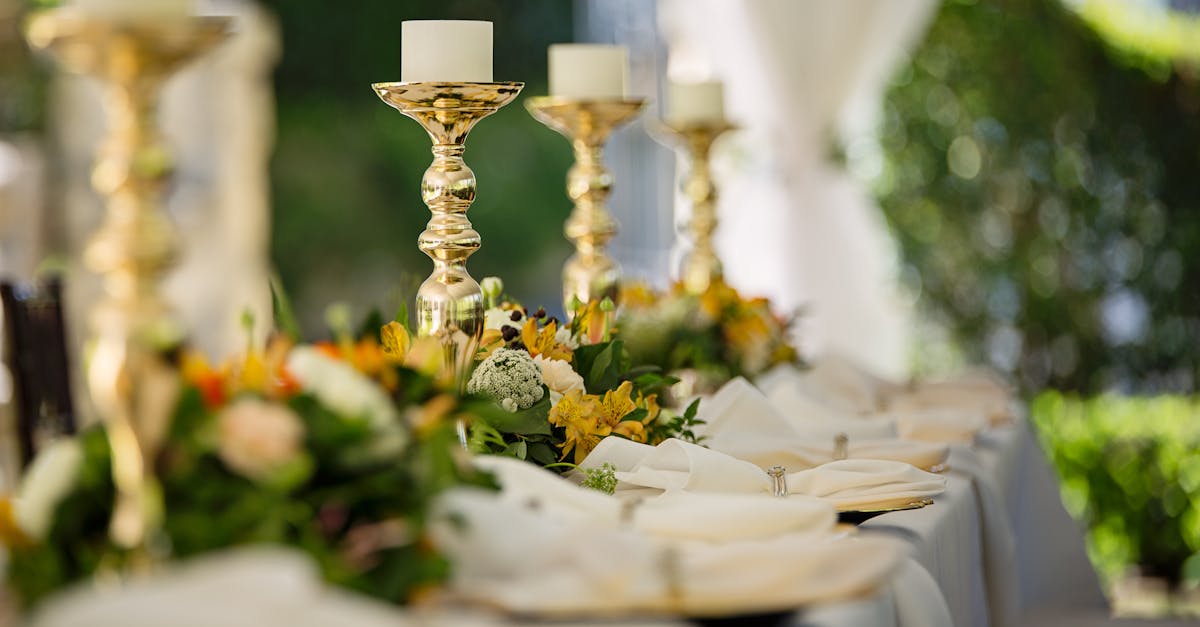
Can You Do Wedding Flowers on a $1000 Budget?
Can You Do Wedding Flowers on a $1000 Budget?
Short answer: yes — often, but it depends on choices and priorities. If your heart is set on beautiful blooms and you’re asking, "is $1000 enough for wedding flowers?", this guide is for you. Here's what you need to know:

Understanding the Costs of Wedding Flowers
Weddings are sacred days and flowers play a big role in how those moments feel. The key factors include: types of flowers, number of arrangements, venue style (ceremony + reception), labor and delivery, and seasonal availability. Typical price ranges you'll see from florists and industry reports are useful to anchor expectations:
- Bridal bouquet: $100–$350
- Bridesmaid bouquets: $40–$120 each
- Boutonnieres/corsages: $10–$25 each
- Table centerpieces: $40–$200 each depending on scale
- Ceremony focal pieces (altar arch, aisle markers): $150–$800+
According to The Knot's latest survey, average couples spend a significant portion of their floral budget on ceremony and reception decor. But averages are not destiny — a thoughtful plan can make $1000 go much further than it sounds.
How $1000 typically translates
With $1000 you can achieve a polished floral look if you prioritize. Example allocation for a modest reception of 6–8 tables:
- Bridal bouquet: $250
- 3 bridesmaids' bouquets: $60 each = $180
- 6 boutonnieres: $15 each = $90
- 6 simple centerpieces: $60 each = $360
- Delivery/setup: $120
Total: $1,000 — a realistic, balanced approach. Swap or remove items (fewer centerpieces, smaller bouquets) and you’ll find room for ceremony florals too.

Tips for Stretching Your Flower Budget to $1000
Being creative and strategic will be your greatest asset. The following tactics are practical, emotional, and designed around preserving the feeling you want without overspending.
Seasonality and flower choice
Choose in-season, locally grown blooms. Peonies in high season, sunflowers in late summer, and greenery-forward palettes cost less than imported roses or orchids. As recommended by Brides magazine, single-variety arrangements (for example, all-dahlia tables or hand-tied eucalyptus and roses) simplify design and lower material cost.
Repurpose ceremony flowers
One of the most gentle ways to stretch your budget is to reuse large ceremony pieces at the reception. An altar arrangement can become the sweetheart table backdrop or be split into multiple centerpieces. Ask your florist to price both configurations — repurposing often saves labor and material costs.
Go heavy on greenery
Lush greenery (eucalyptus, ruscus, olive branch) reads as luxe but is affordable. Using greenery as the foundation and adding small clusters of focal flowers gives richness for less.
Limit the number of centerpiece types
Fewer unique centerpiece styles means lower design and labor costs. Repeat a single affordable design across tables; consider alternating floral tables with candle or runner-only tables.
DIY and partial DIY
DIYing elements like simple bud vases or boutonnières can save money if you’re comfortable with time and handiwork. If DIY feels overwhelming, consider a hybrid: hire a florist for the bridal bouquet and a few focal pieces, and DIY small table arrangements. For how-to resources and ideas, Martha Stewart Weddings has step-by-step tutorials that are helpful.
Negotiate and get clear quotes
Ask florists for tiered options and line-item quotes (flowers, containers, labor, delivery). Sometimes moving $50 from the centerpiece line to the bridal bouquet yields a much better emotional payoff. Always confirm setup time, teardown policy, and any overtime fees.

Next Steps: Planning Your Floral Design Within Budget
Practical next steps will keep you grounded and emotionally centered as you decide. The key to success is price transparency and a clear artistic vision.
1. Decide on priorities
Who will carry flowers? Which moments do you want to emphasize (walking down the aisle, sweetheart table, guest tables)? Prioritize the items that will be in portraits and on camera.
2. Create a brief and timeline
Give florists a one-page brief: guest count, table count, ceremony layout, colors, and your budget cap ($1,000). Start this process 2–4 months before the wedding for the best pricing and selection. For smaller events or micro-weddings, timelines can be shorter.
3. Ask these questions when you get quotes
- What is included in each line item (vases, mechanics, delivery)?
- Can some pieces be repurposed after the ceremony?
- What are lower-cost alternatives that achieve a similar aesthetic?
4. Use tools and local resources
Use a wedding planning checklist or budget calculator to map out where flowers fit in your overall spend. Local resources like Visit Arizona can help you identify local growers and venues that favor seasonal blooms.
If you're still wondering, "is $1000 enough for wedding flowers?", remember it often is — especially when you define your visual priorities and lean into seasonality, greenery, repurposing, and smart vendor communication.
These flowers will be part of your memory-making. They support the moments you’ll look back on — the walk down the aisle, the first portraits, the table conversations. Preserve those feelings thoughtfully, and they'll feel abundant even with a modest budget.
At Heartcraft Wedding Films, we understand that every detail of your Arizona wedding journey matters. From the planning stages to your sacred day, we're here to capture it all with artistry and care.
See Our Work in Action
Watch one of our recent Arizona wedding films to see our cinematic storytelling in action:


Instagram
Youtube
TikTok
Pinterest
Website
Facebook
Mail
Google Plus